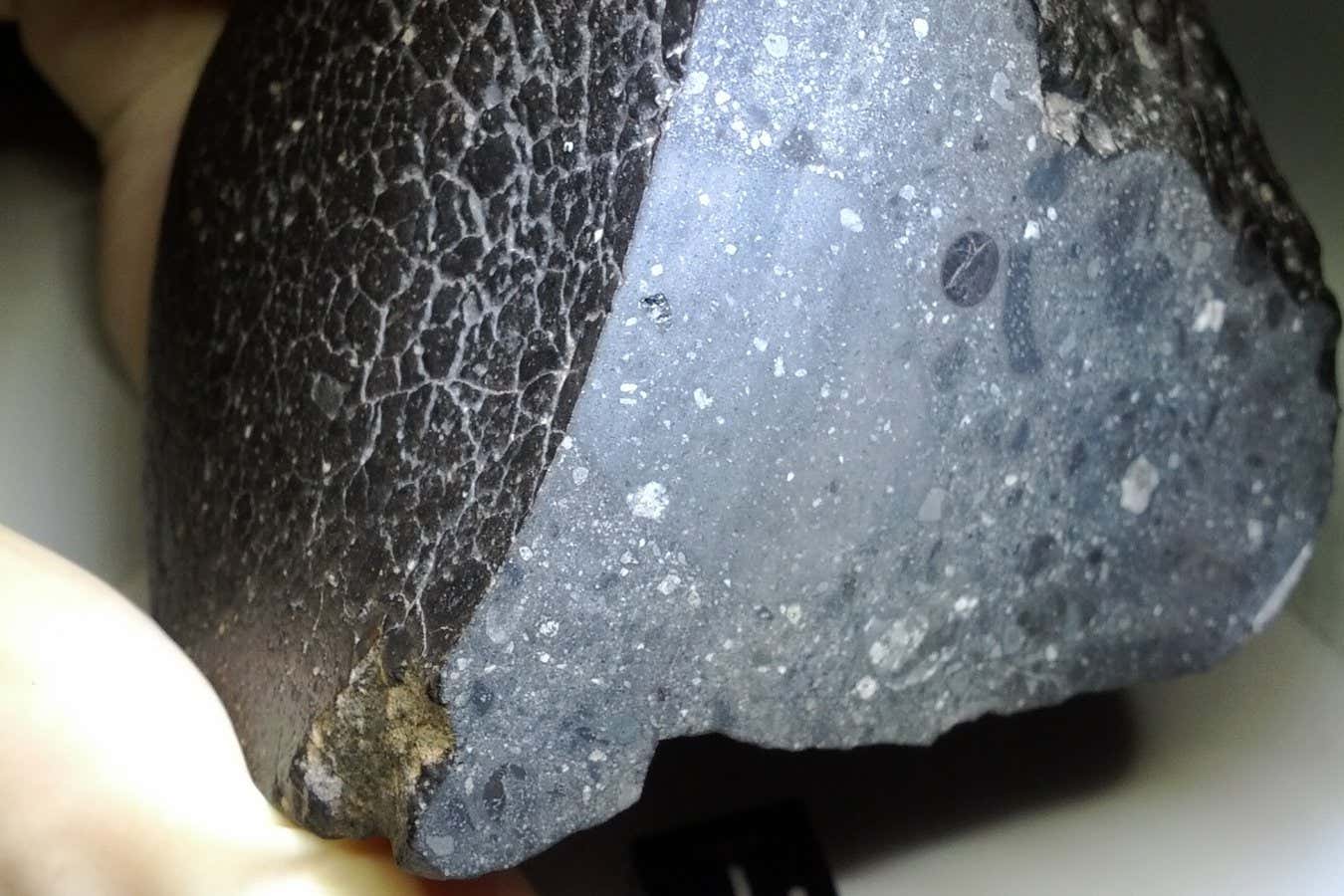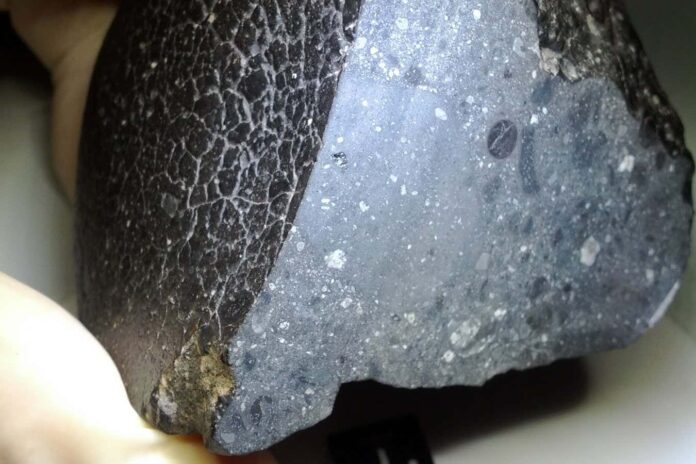
A Martian meteorite nicknamed Black Beauty
Carl B. Agee (University of New Mexico)
Crystals inside a Martian meteorite hint that there may have been plentiful hot water on Mars when the rock formed 4.45 billion years ago.
The rock, nicknamed Black Beauty, was blasted into space by an impact on the surface of Mars before ultimately crashing into the Sahara desert.
Much has already been learned about Mars from studying the meteorite, which was discovered in Morocco in 2011 and is formally known as Northwest Africa 7034.
Aaron Cavosie at Curtin University in Perth, Australia, and his colleagues have spent years studying a tiny fragment of it that includes a zircon crystal measuring 50 micrometres across.
Cavosie describes Black Beauty as a “garbage can” rock because it was formed from hundreds of fragments smashed together. “It’s a wonderful buffet of Martian history, a mixture of very old and very young rocks,” he says. “But many of the fragments in it are among the oldest pieces of rock from Mars.”
The piece that Cavosie and his team have studied was crystallised in magma below the Martian surface. When they examined the zircon, they discovered that, unusually, it also contained the elements iron, aluminium and sodium, neatly arranged in thin layers like that of an onion.
“We wondered, where else do you find elements like this in a zircon crystal?” says Cavosie. The answer was at a gold ore deposit site in South Australia, he says, where the zircon crystals were almost identical to those that had come from Mars, including their same unusual combination of additional elements.
“These kinds of zircons are only known to form where hydrothermal processes, hot water systems, are active during magmatism,” says Cavosie. “The hot water facilitates transportation of the iron, aluminium and sodium into the crystal as it grows, layer by layer.”
The zircon has undergone multiple massive traumas, including being hit by an ancient impact event, then later by a different meteorite that struck the Martian surface 5 million to 10 million years ago and blasted Black Beauty into space. In spite of these violent events, the rock’s crystal structure is still intact at the atom scale.
The absence of radiation damage means the extra elements were part of the crystal to begin with, rather than contaminating at a later date, says Cavosie.
Eva Scheller at Stanford University in California says if the rock really did form in the presence of hot water and magma under the surface of Mars, that suggests the possibility of water vapour being released into Mars’s atmosphere before the formation of rivers and lakes.
“At such an ancient age of 4.5 billion years, we are placed at the timing of when Mars formed,” says Scheller. “So this would mark evidence of some of the earliest behaviour of water on Mars.”
Topics:






